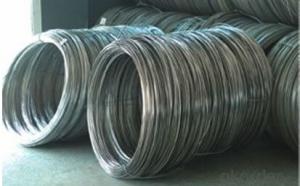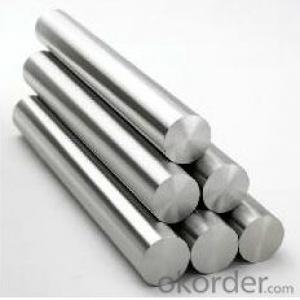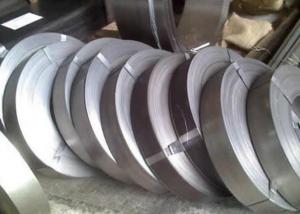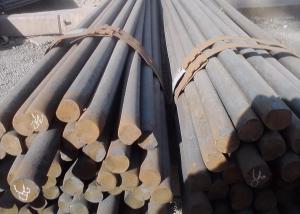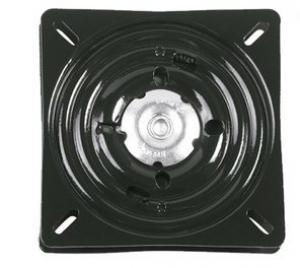Hot Rolled High Carbon PC Strand in Steel Wire Rod
- Loading Port:
- Tianjin
- Payment Terms:
- TT OR LC
- Min Order Qty:
- 25 m.t.
- Supply Capability:
- 10000 m.t./month
OKorder Service Pledge
OKorder Financial Service
You Might Also Like
Item specifice
Hot Rolled High Carbon PC Strand in Steel Wire Rod
Specification
Grade | Dia(mm) | Standard | Chemical Composition % | ||||||||
|
|
| C | Si | Mn | P | S | Ni | Cr | Cu | V |
YL77B | 5.5-13mm | GB/T24238-2009 | 0.75-0.80 | 0.10-0.30 | 0.60-0.90 | ≤0.025 | ≤0.025 | ≤0.10 | ≤0.35 | ≤0.20 |
|
YL82B |
|
| 0.80-0.85 | 0.10-0.30 | 0.60-0.90 | ≤0.025 | ≤0.025 | ≤0.10 | ≤0.35 | ≤0.20 | 0.15 |
SWRH62B |
| JIS G3506-1996 | 0.59-0.66 | 0.15-0.35 | 0.60-0.90 | ≤0.030 | ≤0.030 |
|
| ≤0.030 |
|
SWRH67B |
|
| 0.64-0.71 | 0.15-0.35 | 0.60-0.90 | ≤0.030 | ≤0.030 |
|
| ≤0.030 |
|
SWRH72B |
|
| 0.69-0.76 | 0.15-0.35 | 0.60-0.90 | ≤0.030 | ≤0.030 |
|
| ≤0.030 |
|
SWRH77B |
|
| 0.74-0.81 | 0.15-0.35 | 0.60-0.90 | ≤0.030 | ≤0.030 |
|
| ≤0.030 |
|
SWRH82B |
|
| 0.79-0.86 | 0.15-0.35 | 0.60-0.90 | ≤0.030 | ≤0.030 |
|
| ≤0.030 |
|
Chemical Composition
Grade | Chemical Composition(%) | |||||
C | Mn | Si | S | P | Cr | |
SAE1006B | 0.03~O.07 | ≤0.32 | ≤0.30 | ≤0.045 | ≤0.040 | 0.3-0.35 |
Mechanical properties | ||||||
Yield strength(N/mm2) | Tensile strength(N/mm2) | Elongation(%) | ||||
250-280 | 350-380 | ≥32 | ||||
Grade | Chemical Composition(%) | |||||
C | Mn | Si | S | P | Cr | |
SAE1008B | 0.10max | 0.3~O.50 | 0.15max | 0.050max | 0.040 max | 0.3-0.35 |
Mechanical properties | ||||||
Yield strength(N/mm2) | Tensile strength(N/mm2) | Elongation(%) | ||||
≥195 | 315-430 | ≥30 | ||||
Company Information
CNBM International Corporation is the most import and export platform of CNBM group(China National Building Material Group Corporation) ,which is a state-owned enterprise, ranked in 270th of Fortune Global 500 in 2015.
With its advantages, CNBM International are mainly concentrate on Cement, Glass, Iron and Steel, Ceramics industries and devotes herself for supplying high quality series of refractories as well as technical consultancies and logistics solution.
After-sale service | CNBM provides the services and support you need for every step of our cooperation. We’re the business partners you can trust; you can relax and get on with doing business. |
For any problem, please kindly contact us at any your convenient time, we’ll reply you in our first priority within 24 hours | |
Advantages | Industry experience over 20 years. |
Shipment of goods -More than 70 countries worldwide. | |
The most convenient transport and prompt delivery. | |
Competitive price with best service. | |
High technical production line with top quality products. | |
High reputation based on best quality products. |
Products Show
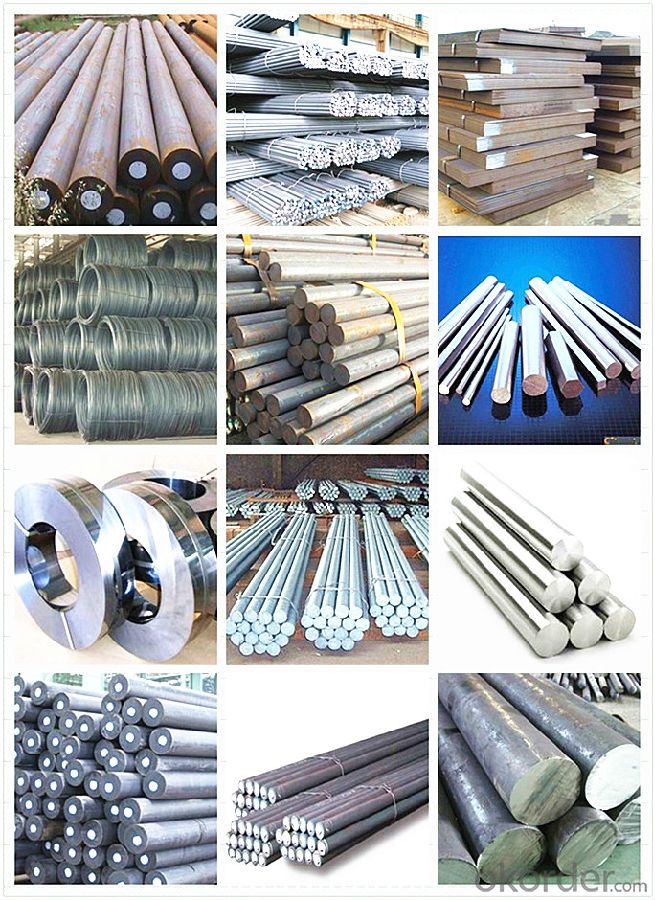
FAQ
Are you a trading company or manufacturer? | Manufacturer |
What’s the MOQ? | 3 metric ton |
What’s your delivery time? | 15-35 days after downpayment received |
Do you Accept OEM service? | Yes |
what’s your delivery terms? | FOB/CFR/CIF |
What's the Payment Terms? | 30% as deposit,70% before shipment by T/T |
Western Union acceptable for small amount. | |
L/C acceptable for large amount. | |
Scrow ,Paybal,Alipay are also ok | |
Why choose us? | Chose happens because of quality, then price, We can give you both. |
Additionally, we can also offer professional products inquiry, products knowledge train (for agents), smooth goods delivery, excellent customer solution proposals. | |
What's your available port of Shipment? | Main Port, China |
What’s your featured services? | Our service formula: good quality+ good price+ good service=customer's trust |
Where are your Market? | Covering more than 160 countries in the world |
- Q:How does special steel perform in high-vibration environments?
- Special steel is specifically designed to perform well in high-vibration environments. Its unique composition and properties allow it to withstand and absorb vibrations, reducing the risk of structural damage, fatigue, and failure. Special steel's high strength, durability, and resistance to corrosion make it an ideal choice for applications where vibrations are a concern, ensuring reliable and long-lasting performance.
- Q:What are the different applications of stainless special steel?
- Stainless special steel, also known as stainless steel, is a versatile material that finds applications in various industries due to its unique properties. Some of the different applications of stainless special steel include: 1. Construction: Stainless steel is widely used in the construction industry for its durability and corrosion resistance. It is used in structural components, bridges, building facades, and roofing materials. 2. Automotive industry: Stainless steel is extensively used in the automotive sector for its strength, heat resistance, and durability. It can be found in exhaust systems, mufflers, catalytic converters, fuel tanks, and various other components. 3. Medical equipment: Stainless steel is the material of choice in the medical field due to its high corrosion resistance and biocompatibility. It is used in the manufacture of surgical instruments, implants, orthopedic devices, and medical equipment. 4. Food processing industry: Stainless steel is widely used in the food industry due to its hygienic properties. It is used in the production of food processing equipment, storage tanks, food preparation surfaces, and utensils. 5. Aerospace industry: Stainless steel is used in the aerospace industry for its strength, heat resistance, and corrosion resistance. It is used in the manufacturing of aircraft parts, engine components, and structural elements. 6. Chemical industry: Stainless steel is highly resistant to corrosion from various chemicals, making it suitable for applications in the chemical industry. It is used in the production of tanks, pipes, valves, and other equipment that come into contact with corrosive substances. 7. Energy sector: Stainless steel is used in the energy industry for various applications. It is used in the construction of power plants, oil and gas refineries, pipelines, and renewable energy systems such as wind turbines and solar panels. 8. Marine industry: Stainless steel is extensively used in marine environments due to its excellent corrosion resistance properties. It is used in the manufacture of boat fittings, propellers, underwater structures, and offshore platforms. 9. Household appliances: Stainless steel is commonly used in household appliances due to its aesthetic appeal, durability, and resistance to stains and scratches. It can be found in kitchen appliances such as refrigerators, ovens, dishwashers, and washing machines. 10. Art and design: Stainless steel is increasingly being used in art installations, sculptures, and architectural designs due to its aesthetic appeal, versatility, and ability to withstand outdoor conditions. In summary, stainless special steel has a wide range of applications across industries due to its durability, corrosion resistance, strength, heat resistance, and aesthetic appeal. It plays a crucial role in construction, automotive, medical, food processing, aerospace, chemical, energy, marine, household appliances, and artistic fields.
- Q:How does special steel contribute to the automotive racing aftermarket industry?
- Special steel plays a crucial role in the automotive racing aftermarket industry by providing the necessary strength, durability, and performance required for high-performance racing vehicles. In this industry, where speed, precision, and safety are paramount, special steel offers unique properties that enable engineers and manufacturers to push the limits of performance. One key way that special steel contributes to the automotive racing aftermarket industry is through its ability to withstand extreme conditions. Racing vehicles are subjected to intense heat, pressure, and vibrations during high-speed races, which can put immense stress on various components. Special steel, with its exceptional heat resistance and high tensile strength, ensures that critical parts like engine components, transmission gears, and suspension systems can withstand these harsh conditions without compromising performance or safety. Furthermore, special steel is known for its lightweight properties, making it an ideal material for racing vehicle components. Weight reduction is a crucial aspect of racing as it directly impacts acceleration, handling, and overall performance. By using special steel, manufacturers can create lighter yet stronger components, allowing racing teams to achieve higher speeds, better maneuverability, and improved fuel efficiency. Special steel also contributes to the automotive racing aftermarket industry by offering excellent machinability and weldability. This allows for precise customization and modification of components, catering to the specific needs and preferences of racing teams. Whether it is creating custom engine blocks, exhaust systems, or chassis reinforcements, special steel provides the flexibility required to optimize performance and gain a competitive edge. Moreover, the use of special steel in the automotive racing aftermarket industry promotes innovation and technological advancements. Steel manufacturers continually develop new alloys and compositions that enhance the performance capabilities of racing vehicles. These advancements can include improved corrosion resistance, better fatigue strength, and enhanced material properties, all of which contribute to the overall performance and longevity of racing vehicle components. In summary, special steel is a vital contributor to the automotive racing aftermarket industry. Its unique combination of strength, durability, lightweight properties, and machinability enables racing teams to design and manufacture high-performance vehicles that can withstand extreme conditions. By leveraging the advantages of special steel, the industry can continue to push the boundaries of automotive racing, delivering faster, safer, and more efficient racing machines.
- Q:Are there any disadvantages of using special steel?
- There are several disadvantages associated with the use of special steel. To begin with, special steel tends to be more expensive compared to regular steel. This is primarily due to the additional alloying elements and heat treatments involved in its production, which contribute to the higher cost. As a result, it may not be the most cost-effective option for applications where cost is a major factor. Furthermore, special steel may have limited availability in comparison to regular steel. It is often produced in smaller quantities and may only be obtainable from specific suppliers. This can lead to longer lead times and difficulties in sourcing the required amount of special steel, particularly for large-scale projects. Additionally, the increased complexity of working with special steel can pose challenges. It may require specialized knowledge, skills, and equipment for handling and processing. If the necessary expertise or resources are not readily available, this can result in higher manufacturing costs and potential delays in production. Moreover, some special steel grades with high strength and hardness can be more prone to brittleness. This means they may be susceptible to cracking or breaking under certain conditions, especially when exposed to extreme temperatures or sudden impact loads. This limitation can be a disadvantage in applications that require high toughness or resistance to fracture. Lastly, special steel may have limited applications due to its specific properties. While it offers advantages such as corrosion resistance, high temperature resistance, or improved mechanical properties, these benefits may not be relevant or necessary for every application. Consequently, using special steel in such cases may incur unnecessary expenses without any tangible benefits. In conclusion, special steel has its drawbacks, including higher costs, limited availability, increased complexity, potential brittleness, and limited applicability. Therefore, it is crucial to carefully consider the specific requirements of a project before opting for special steel.
- Q:What are the different methods of improving the creep resistance of special steel?
- There are several methods of improving the creep resistance of special steel, which are designed to enhance its ability to withstand long-term exposure to high temperatures and constant stress. Some of the methods commonly employed include: 1. Alloying: Special steel can be alloyed with specific elements to enhance its creep resistance. The addition of elements such as chromium, molybdenum, tungsten, and vanadium can significantly improve the material's ability to resist creep deformation. These alloying elements form strong carbides or intermetallic compounds, which impede the movement of dislocations and enhance the material's strength and resistance to creep. 2. Heat treatment: Precise heat treatment techniques can be employed to improve the creep resistance of special steel. Processes such as quenching and tempering, annealing, and normalizing can alter the steel's microstructure, leading to the formation of fine-grained and homogeneous structures that offer improved creep resistance. Heat treatment also helps in relieving residual stresses and improving the material's overall strength. 3. Grain refinement: Special steel can be subjected to processes that refine its grain structure, thereby enhancing its creep resistance. Techniques such as grain size reduction through controlled rolling, recrystallization, and severe plastic deformation can lead to the formation of smaller and more uniform grains. This refined microstructure hinders dislocation movement and improves the material's resistance to creep deformation. 4. Precipitation hardening: Special steel can be subjected to precipitation hardening methods, where the material is heated and then rapidly cooled to induce the formation of fine precipitates. These precipitates act as barriers to dislocation movement, improving the material's strength and creep resistance. 5. Surface modification: Special steel can be treated with surface modification techniques to increase its creep resistance. Methods such as shot peening, laser surface melting, and surface coatings can improve the surface integrity, reduce surface roughness, and introduce compressive residual stresses, all of which contribute to enhanced creep resistance. It is important to note that the selection and combination of these methods depend on the specific requirements of the application and the type of special steel being used. The aim is to optimize the material's microstructure, chemical composition, and surface characteristics to achieve the desired creep resistance and ensure long-term performance at elevated temperatures.
- Q:What are the properties of free-cutting steel?
- Free-cutting steel is characterized by its high machinability, which means it can be easily and efficiently machined into various shapes and sizes. It has excellent chip breaking properties, resulting in reduced tool wear and improved surface finish during machining operations. Free-cutting steel also has good formability, allowing it to be easily shaped and fabricated. Additionally, it exhibits high strength and good corrosion resistance, making it suitable for a wide range of applications in industries such as automotive, aerospace, and machinery manufacturing.
- Q:How is high-temperature alloy steel used in the production of heat exchangers?
- High-temperature alloy steel is used in the production of heat exchangers due to its exceptional heat resistance and strength properties. This type of steel can withstand high temperatures without deforming or losing its mechanical properties, making it ideal for handling hot fluids or gases in heat exchange processes. The alloy's ability to resist corrosion and oxidation further enhances its suitability for this application. Overall, high-temperature alloy steel ensures the durability and efficiency of heat exchangers in various industries such as power generation, chemical processing, and petroleum refining.
- Q:What are the international standards for special steel?
- The international standards for special steel vary depending on the specific type and application of the steel. However, some widely recognized international standards organizations, such as the International Organization for Standardization (ISO) and the American Society for Testing and Materials (ASTM), provide guidelines and specifications for special steel in terms of composition, mechanical properties, and performance. These standards ensure uniformity and quality control in the production and usage of special steel across different countries and industries.
- Q:How does special steel perform in high-temperature creep?
- Special steel is specifically designed to perform well in high-temperature creep conditions. It possesses superior strength, resistance to deformation, and stability at elevated temperatures, making it highly suitable for applications where prolonged exposure to high temperatures and constant stress is expected. Its unique composition and heat treatment processes enable it to maintain its mechanical properties and resist deformation or failure for extended periods under these extreme conditions.
- Q:What are the different test methods used to evaluate special steel?
- Special steel undergoes several test methods to evaluate its quality and performance, ensuring that it meets the required standards and specifications. Commonly employed test methods include: 1. Tensile Testing: This method assesses the steel's ability to withstand tension or pulling forces, determining its ultimate tensile strength, yield strength, and elongation. 2. Hardness Testing: Hardness tests, such as Rockwell or Brinell tests, evaluate the steel's resistance to indentation or scratching, providing insight into its strength and durability. 3. Impact Testing: This test measures the steel's capacity to absorb energy under high-stress conditions. Charpy and Izod tests are frequently used to determine the steel's toughness and resistance to sudden shocks or impacts. 4. Chemical Analysis: Determining the steel's composition, including the percentage of elements like carbon, manganese, and chromium, guarantees that it meets the necessary specifications and standards. 5. Microstructure Evaluation: Microscopic examination of the steel's microstructure reveals crucial information about its grain size, phase distribution, and any potential defects or inclusions. Optical microscopy or electron microscopy techniques are employed for this purpose. 6. Corrosion Testing: Special steel must endure harsh environments or corrosive substances. Various corrosion tests, such as salt spray tests or immersion tests, assess the steel's resistance to corrosion and degradation. 7. Non-Destructive Testing (NDT): NDT methods, including ultrasonic testing, magnetic particle testing, or eddy current testing, detect surface or internal defects without damaging the steel. These tests provide valuable information about the steel's structural integrity. 8. Fatigue Testing: Fatigue tests simulate repetitive loading conditions to evaluate the steel's resistance to cyclic stress, assessing its durability and ability to withstand long-term usage or repetitive loading. Utilizing these diverse test methods, manufacturers and quality control departments can thoroughly assess the mechanical properties, chemical composition, microstructure, and other crucial factors of special steel, ensuring it meets the necessary standards and specifications.
1. Manufacturer Overview |
|
|---|---|
| Location | |
| Year Established | |
| Annual Output Value | |
| Main Markets | |
| Company Certifications | |
2. Manufacturer Certificates |
|
|---|---|
| a) Certification Name | |
| Range | |
| Reference | |
| Validity Period | |
3. Manufacturer Capability |
|
|---|---|
| a)Trade Capacity | |
| Nearest Port | |
| Export Percentage | |
| No.of Employees in Trade Department | |
| Language Spoken: | |
| b)Factory Information | |
| Factory Size: | |
| No. of Production Lines | |
| Contract Manufacturing | |
| Product Price Range | |
Send your message to us
Hot Rolled High Carbon PC Strand in Steel Wire Rod
- Loading Port:
- Tianjin
- Payment Terms:
- TT OR LC
- Min Order Qty:
- 25 m.t.
- Supply Capability:
- 10000 m.t./month
OKorder Service Pledge
OKorder Financial Service
Similar products
New products
Hot products
Related keywords
